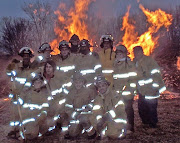“One More River to Cross” – Recognizing the Real Injury in Brown: A Prerequisite to Shaping New Remedies by: Charles Lawrence
Premise:
· Unfairness
· Hurt
· Segregation
· desegregation
· Court system
· Goals
· Life styles
· Anger
· Whiteness
· Being black
· Education
· Disorder
· Laws
· Congress
· Communities
· Civil rights
· Shyness
· Afraid
· Fear
· Hatred
· Not American like
Argument:
Lawrence argues that the Supreme Court’s reasoning in striking down an interdistrict desegregation order in Detroit was flawed in that it misunderstood the true nature of the institution of segregation. The Court’s failure to recognize and articulate the true nature of racial segregation was more the product of an intentional, knowledge decision than the result of any inability to comprehend.
Evidence:
1. There are three underlying reasons that many need to understand about segregation on page 54. Letters A, B, and C all tell about how severe life was for blacks during the mid 19th century. And touch upon the difficulty of becoming equal to whites in society.
2. Also on page 54, “That the purpose of the institution of segregation has always been to stigmatize and subordinate rather than to simply separate perhaps best demonstrated by the fact that whites in the antebellum South had no aversion to commingling with blacks so long as the institution of slavery made their superior status clear.” This shows that segregation was an issue to the black’s and the white did not care as long as they still had their slaves. The Court’s didn’t find anything wrong with this? Along with this on page 55, it talks on the subject of how black children are hurt due to the segregation of schools.
3. On page 58, in the Milliken case, the Court’s intentional misunderstanding of the institution of segregation allowed a rather facile rationale for the Court’s no doubt politically motivated decision to keep black children out of Detroit’s suburbs. The only injury said to hurt blacks was created by official school board action separating black children from white children, Burger only found constitutional violations was in the city of Detroit and, therefore, limited the remedy to that geographic location. This clearly shows how segregation not only affected black adults but black children and even some white children.
Comments/Points to Share:
I liked this reading because it was a very important time in history and the issue is still around today, but it is not as severe as it was back in the time when my mother was in high school. Sometimes I did struggle with reading, because some of the terms were “lawyer-talk” but other wise it was a good read. I found this one to be one of my favorites and I really got into it. While I was reading this article, all I could think about is the stories that my mother used to tell me about my family being the only white family on the block in Harlem and about the time when many racial riots were occurring in the North. My mother went to Hamden High in Connecticut and she told me about the times when she wouldn’t go to school because she herself was afraid since many of the riots were held in front of her high school. Overall, I am a little ashamed that the country I live in sank down to this level because we are a nation and everyone is equal. At least that’s what I was taught from kindergarten through my present schooling.
Subscribe to:
Post Comments (Atom)



1 comment:
I love the connections you make to your family here. YOu should write down those stories from your mom sometime!
Post a Comment